Developing effective customer service practices using Google Reviews

Customer service communications are crucial for growing and sustaining a loyal customer base.
To understand how customer service practices evolve as small businesses expand into chains, we looked at how business owners engage with Google Reviews.
Using the Relative Insight text analysis platform, we compared review responses from chain restaurants with locations in New York City – Olive Garden, Shake Shack, Checkers and Bareburger – to small businesses with a single location.
How we did it
After pulling review responses posted by business owners, I uploaded that information to Relative Insight. Using the combine functionality, I merged like files, resulting in one file for all chain restaurants and another for local businesses.
Next, I ran the analysis. Relative Insight pinpoints the differences and similarities in words, phrases, topics, grammar and emotion between language sets. As I sifted through the discoveries, I flagged key customer insights – visually detailing the findings in insight cards.
Chain restaurants
Chain restaurants typically had formulaic responses to customers. Likely due to increased oversight and standardized practices, company representatives often responded with the same verbatim for consecutive reviews.
Collective voice
The language used in these copy-and-paste responses followed many widely accepted customer service practices, including the use of collective voice. The company was always referred to as we, speaking as a representative and not an individual. This is important in creating cohesion and presenting a united front.
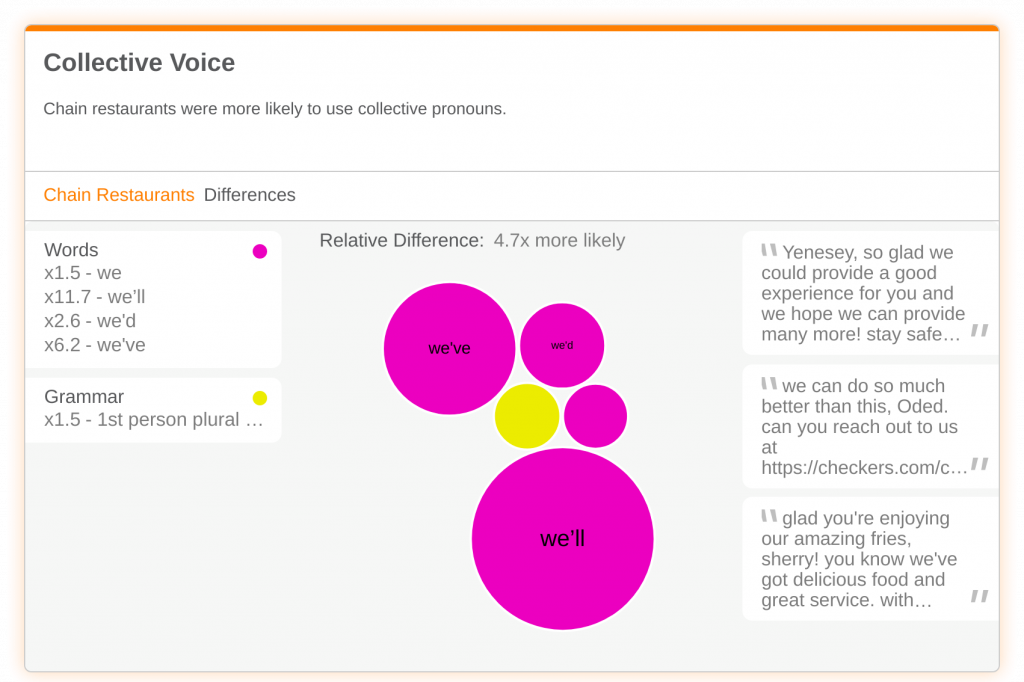
Email us
Chain restaurants were also more likely to seek out additional information from reviewers, requesting that they email a corporate address. This continuation of the customer service process redirects the commenter to a private conversation, diffusing bad reviews and limiting negative public comments.
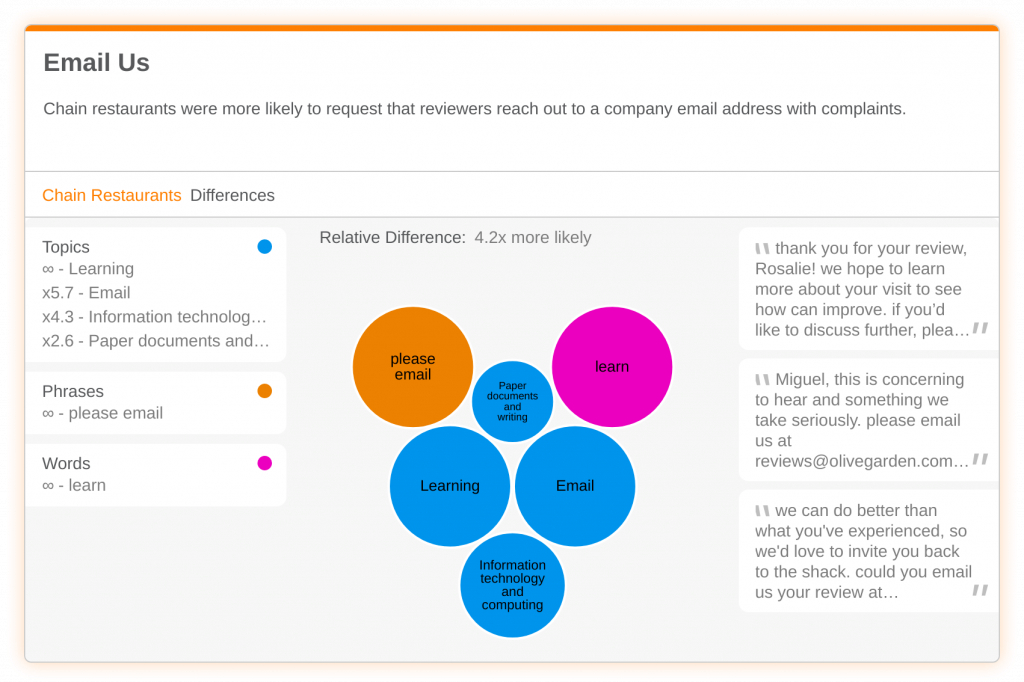
Corporate language
Chain restaurants appear to be fond of typical corporate-speak, frequently using words like feedback and experience. These are broad words with larger implications than synonyms like review and visit. Feedback implies that the critique is being heard and investigated. Using the word experience encompasses all components of the restaurant – food, decor, customer service, pricing, etc.
Return visits
In their responses, chain restaurants were more likely to encourage return visits using the phrase next time. This tactic works to improve customer retention, showing that the company values the reviewer’s patronage.
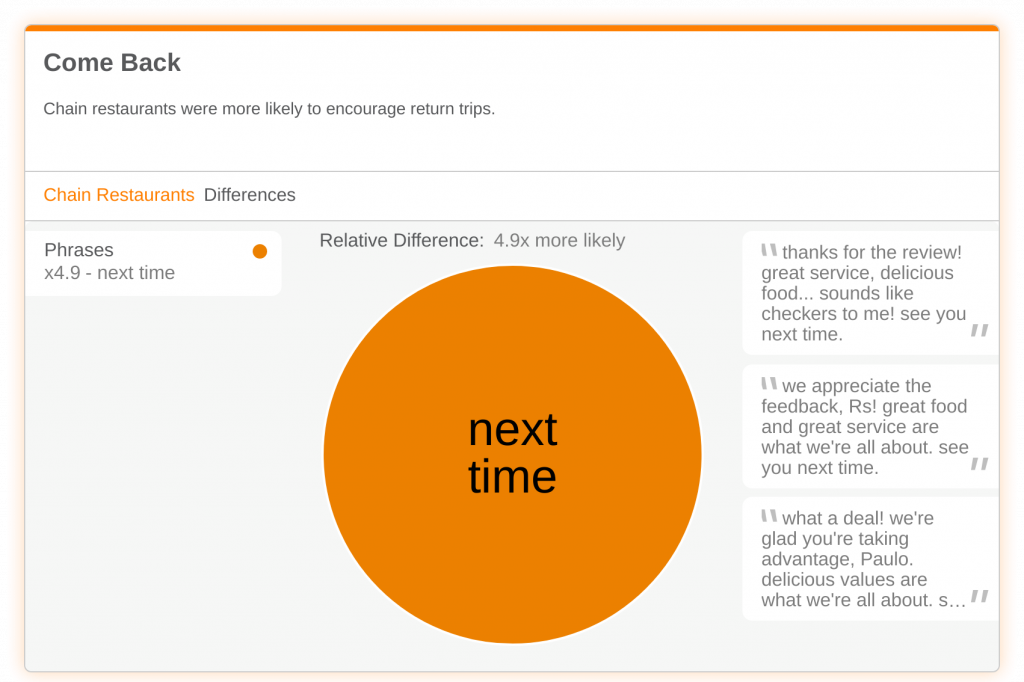
Small businesses
Responses by small businesses are typically less standardized, and reference details from the specific review. As the individual is likely more invested in the restaurant, small business responses showed added emotion – positive and negative.
First-person singular
Review responders were more likely to use the first person singular pronoun. This use highlights that the response is written by an individual and reflects their personal opinion. The individual is taking ownership of the restaurant and their response, often signing off with their name and job title. This personalization is used to demonstrate accountability and personalize the message.
Bad reviews
Small businesses were more likely to respond to and defend against negative reviews. By using words like not and didn’t to provide justification, small businesses often combat reviews they find unfair. We also discovered how small businesses were more likely to show remorse for poor customer experiences.
Grateful
Overall, small businesses showed more enthusiasm for customer feedback. Through the use of adjectives and verbs like thrilled and pleased, we saw increased intensity from small businesses. This could be attributable to the fact that for small businesses, an owner is more likely to be responding to reviews than chain restaurants that often rely on customer service representatives.
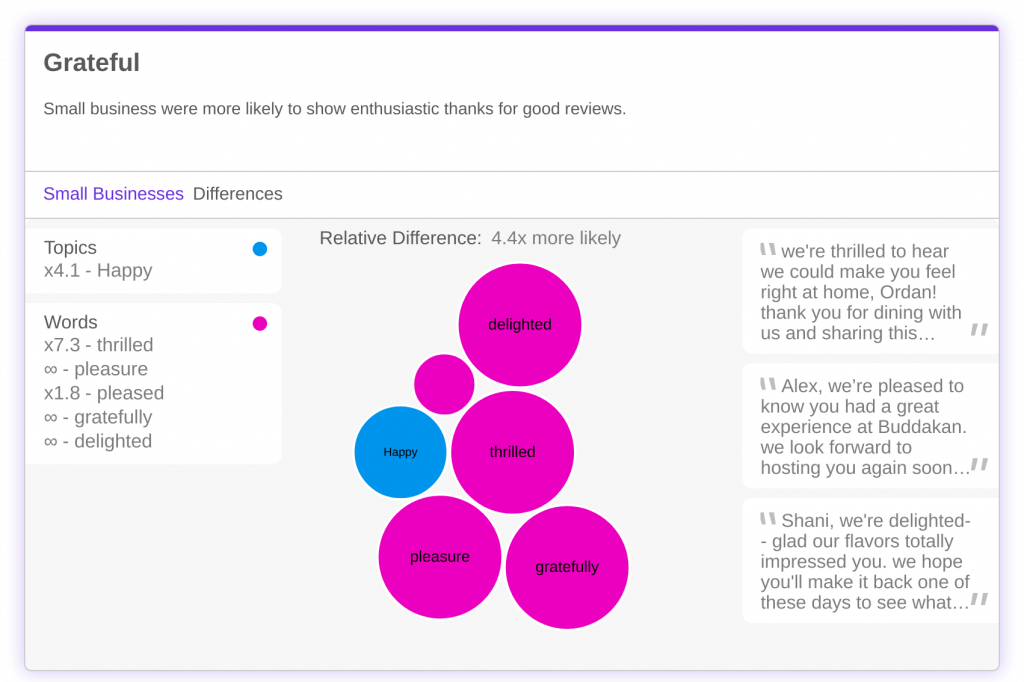
Pricing
An issue we saw repeatedly addressed in small business responses was pricing. Reviewers were more likely to complain about high prices from small businesses. In response, the business would often defend pricing decisions – sometimes more eloquently than others. One business wrote “take a look around Manhattan boss. with labor way way up we feel we are still on the inexpensive side of things.”

Social media
Small businesses were more likely to conclude their response with a social media account, encouraging the reviewer to show support. Organic advertising through social media has become integral for businesses without marketing budgets. Turning that positive review into a follower can help increase the business’ profile.
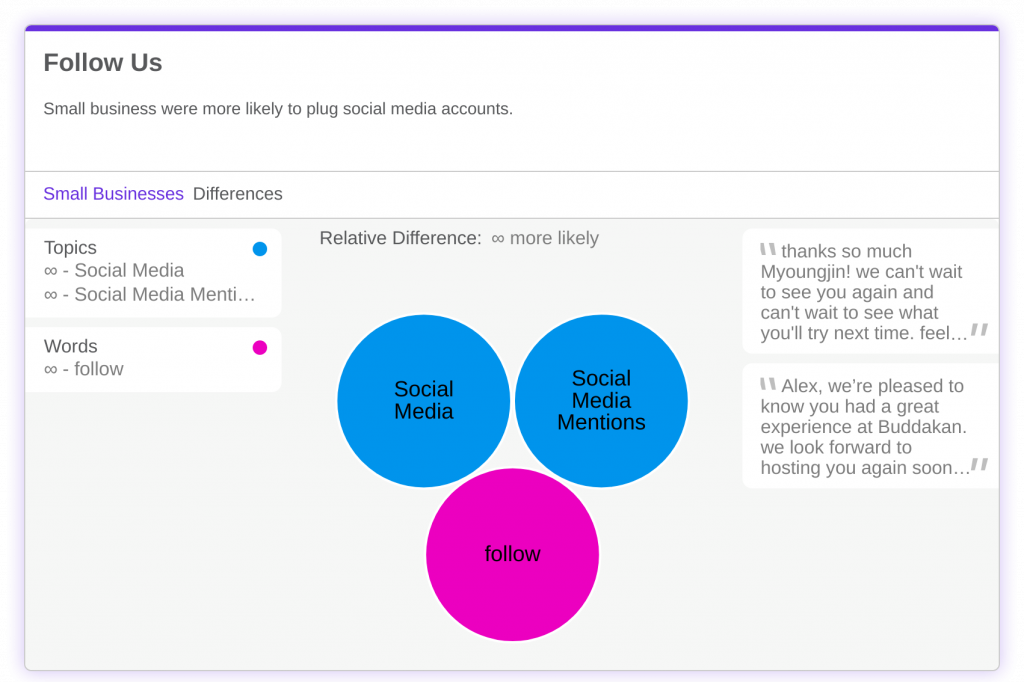
Why is this important?
Customer service communications are crucial for growing and sustaining a loyal customer base. Chain restaurants have likely dedicated more time and resources to customer service procedures, resulting in standardized phrases and practices. On the other hand, small businesses often take reviews more personally by writing long, emotive responses.
This kind of comparative analysis can help businesses benchmark their customer service efforts against competitors, helping to tap into the marketing potential created by positive customer experiences and word of mouth. However, it is only one of many customer insights examples Relative Insight can help you generate.
